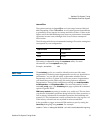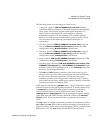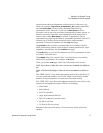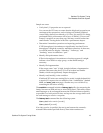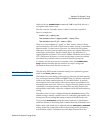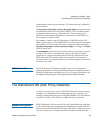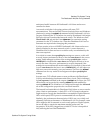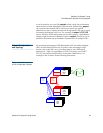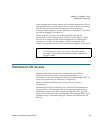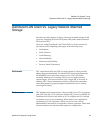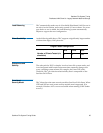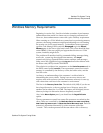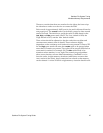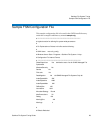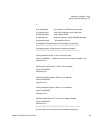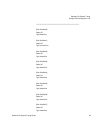
StorNext File System Tuning
Distributed LAN Servers
StorNext File System Tuning Guide 23
In the diagram there are two subnetworks: the blue subnetwork (10.0.0.x)
and the red subnetwork (192.168.9.x). Servers such as S1 are connected to
both the blue and red subnetworks, and can each provide up to
2 GByte/s of throughput to clients. (The three servers shown would thus
provide an aggregate of 6 GByte/s.)
Clients such as C1 are also connected to both the blue and red
subnetworks, and can each get up to 2 GByte/s of throughput. Clients
such as C2 are connected only to the blue subnetwork, and thus get a
maximum of 1 GByte/s of throughput. SNFS automatically load-
balances among NICs and servers to maximize throughput for all clients.
Distributed LAN Servers
Distributed LAN Servers must have sufficient memory. When a
Distributed LAN Server does not have sufficient memory, its
performance in servicing Distributed LAN I/O requests might suffer. In
some cases (particularly on Windows,) it might hang.
Refer to the StorNext Release Notes for this release’s memory
requirements.
Distributed LAN Servers must also have sufficient bus bandwidth. As
discussed above, a Distributed LAN Server must have sufficient bus
bandwidth to operate the NICs used for Distributed LAN I/O at full
speed, while at the same time operating their Fibre Channel HBAs. Thus,
Quantum strong recommends using PCI Express for Distributed LAN
Servers.
Note: The diagram shows separate physical switches used for the
two subnetworks. They can, in fact, be the same switch,
provided it has sufficient internal bandwidth to handle the
aggregate traffic.



